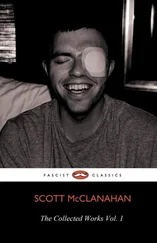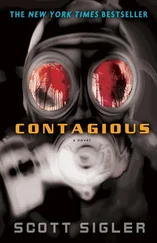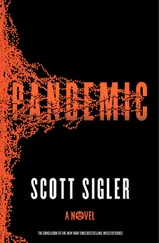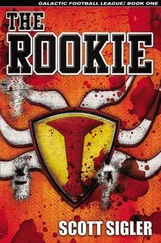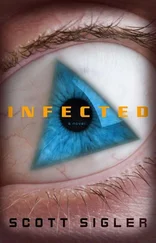John took them, made a show of waving them so the paper made noise. “Pooks, you know you can email this shit, right?”
“Electrons are the work of the devil,” Pookie said. “We found that graffiti at the murder scene.”
“What makes you think it’s related to the murder?”
“It was drawn in the vic’s blood. So was this.”
Pookie handed over another photo showing the words long live the king scrawled in dripping letters on a brick wall.
John’s eyebrows rose.
“Yeah, that’ll do it.”
“You recognize that symbol?”
John stared at it, waiting for a flicker of recognition. A round eye inside a triangle, which itself was inside a circle. Didn’t ring any bells.
John’s main role with the Gang Task Force was to track gang memberships and relationships. That meant database work, analyzing online activity such as email and social media interactions, and that staple of gang communication — graffiti. Graffiti painted a picture of which gangs controlled various parts of the city. What looked like random vandalism was often a complex code of who ran the streets, who was marked for death and who would do the killing.
Computer work was about all John was good for, these days. Six years ago, he’d caught a bullet in his belly, then lay there, bleeding out, while the sniper — a dirty cop named Blake Johansson — kept him pinned down and stopped anyone from reaching him. The incident had left John with a blinding fear that made even the daily drive to work a challenge. Going out and being an actual cop? Forget it.
But if sitting behind a computer was the only way he could contribute, he would do it better than anyone else. Everyone in the department played a role. John knew his and accepted it.
When you’re a coward, you do what you can.
John shook his head. “I’ve never seen this symbol before. You got pictures of the victim?”
Pookie pulled out more printouts and handed them over. John had seen a lot of damage in his career, but this was among the worst. Such savagery . The colors of the victim’s jacket clicked home.
“He was in Boys Company,” John said.
“That a gang?”
John nodded. “Small potatoes. Just kids. Runs mostly out of Galileo High in the Marina.”
“They at war with anyone?”
“Not that I know of. Like I said, they’re small potatoes. A little B and E, some fighting, maybe a little dealing in the school. More like a club than a gang. If BoyCo went up against a serious outfit like MS13, they’d get slaughtered.”
Pookie pointed to the picture. “That sort of fits my definition of slaughter .”
“Good point. I’ll start digging, but I’m sure no one is at war with BoyCo.”
“How do you know he’s from BoyCo?”
“The jacket,” John said. “Boston College. Initials are B and C , same as Boys Company. That’s how they show their colors.”
“So why not the Boston Celtics? That’s BC.”
“Green and black are the colors of the Latin Cobras,” John said. “Anyone wearing Celtics gear is going to get fucked up by the Cobras, or any of the gangs that are fighting with the Cobras. Pretty much every gang has some sports team affiliation, either with colors or initials.”
“Go team,” Pookie said. “Dare I ask what happens if I wear the colors of my beloved Chicago Bears?”
“You get beat up by Raiders fans. That’s the worst of it, though. I don’t think any gangs use the Bears. Kids got to be real careful of what color clothes they wear to school these days — the wrong colors in the wrong spot can get you killed.”
Pookie nodded absently as he thought. “If it’s not another gang, what about someone just fighting back? Maybe BoyCo roughed up the wrong kid?”
“Possible, but not likely,” John said. “These lower-tier gangs are usually smart enough to only pick on the weak. They target kids who aren’t in a gang or related to gang members, who aren’t on the wrestling team or football team, anything like that.”
“And long live the king ? Could that be some gangsta’s street name?”
John shrugged. “Maybe, but that doesn’t ring any bells, either. We could have a new player in the mix. Let’s take a look at the BoyCo file.”
John sat at his computer and called up his database. The file had hundreds of tabs, one for each of the gangs that ran through the Bay Area. Some, like MS13 or the Norteños, were seriously bad news, connected on a national and even international basis. Other outfits were local but just as dangerous, like Westmob and Big Block in Hunters Point; 14K Triad and Wah Ching in Chinatown; Jackson Street Boys all over the city; or Knock Out Posse and Eddy Rock in the Western Addition.
John clicked on the tab for BoyCo. A file appeared with four photos.
Pookie looked over his shoulder. “Just four kids?”
“That we know of. Oscar Woody, Jay Parlar, Issac Moses and the leader, Alex Panos.”
“Four kids is a gang?”
John shrugged. “Like I said, more of a club of bullies, really. Barely even on our radar.”
Pookie pulled out another photo. A particularly gruesome shot, it showed Oscar Woody’s full body: arm ripped off, stomach torn open, face beaten so badly it barely looked human.
“This isn’t just some mugging,” Pookie said. “The mutilation, the writing on the wall — someone is sending a message. Sure it couldn’t be MS13? Don’t they cut off limbs?”
“And hands and heads,” John said. “But MS13 uses machetes. Look at that kid’s body, Pooks. He wasn’t cut apart, he was torn apart.”
“Could it be a new gang? What about that blood-graffiti symbol?”
“That’s where we’ll start. Let’s get this scanned in and see what the computer says.”
John scanned in both the photos, then opened them up in his computer and accessed the Regional Information Sharing System. RISS coordinated nationwide gang data, including suspects, organizations and weapons as well as visual imagery of gang members, gang symbols and gang graffiti.
“Huh,” Pookie said. “And I thought the Internet was for porn.”
“Oh no,” John said. “We don’t look at porn down here, Pooks. There are filters and then if you’re caught—”
“Kidding,” Pookie said. “Jesus, man, you haven’t changed a bit.”
John sighed. Even when they’d been partners, he only caught about half of Pookie’s humor. “Anyway, the RISS software identifies key points much like a fingerprint, marking the degree of curves, the thickness and relative length of lines. It breaks down individual segments of the symbols into a hundred minisymbols. Then I feed it into the database and it searches for matches, partial or full.”
“Does this crap really work?”
John nodded. “Oh, hell yeah. It’s amazing. It can even build a graphic profile on individual artists so accurate we can tell the genuine artist from an imitator.”
The computer beeped.
John opened a window to read the results. “Huh. Nothing in San Francisco.”
“Anywhere else?”
John scanned the results. “Looks like one hit in New York City a couple of decades ago. A serial killer. Looks like he murdered four women, then killed himself. That’s all it says. I’m sure there’s more info, but we’d have to reach out to the NYPD to get it.”
As John read the lines of information, he saw something strange. “This is weird.”
“What is?”
“Well, I see incoming links on these symbols from that old case in New York, but what those links connect to was deleted from our system. Oh, look at this! Here’s a local request. It’s old, must have been the early days of the SFPD’s efforts to computerize. Let’s see … twenty-nine years ago. But there’s no images associated with it, so we can’t know if the request was answered.”
Читать дальше


